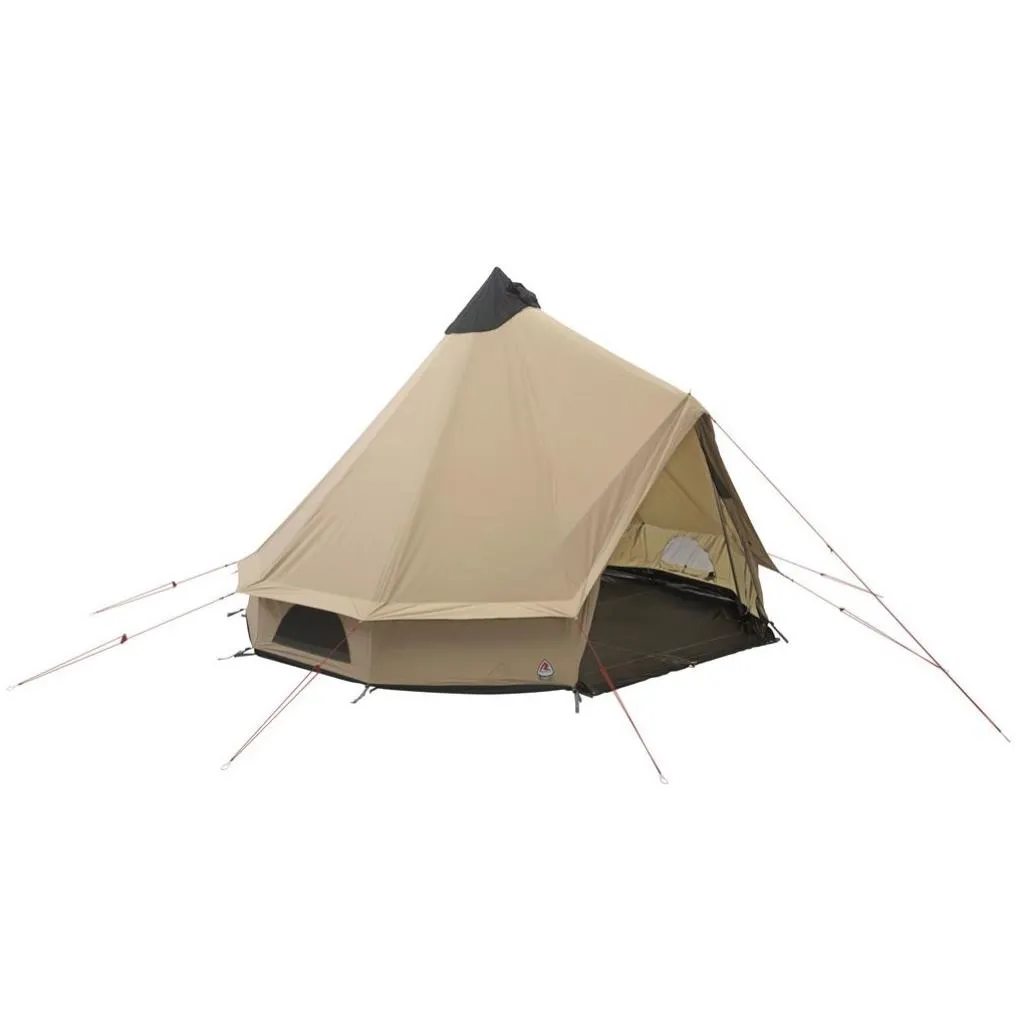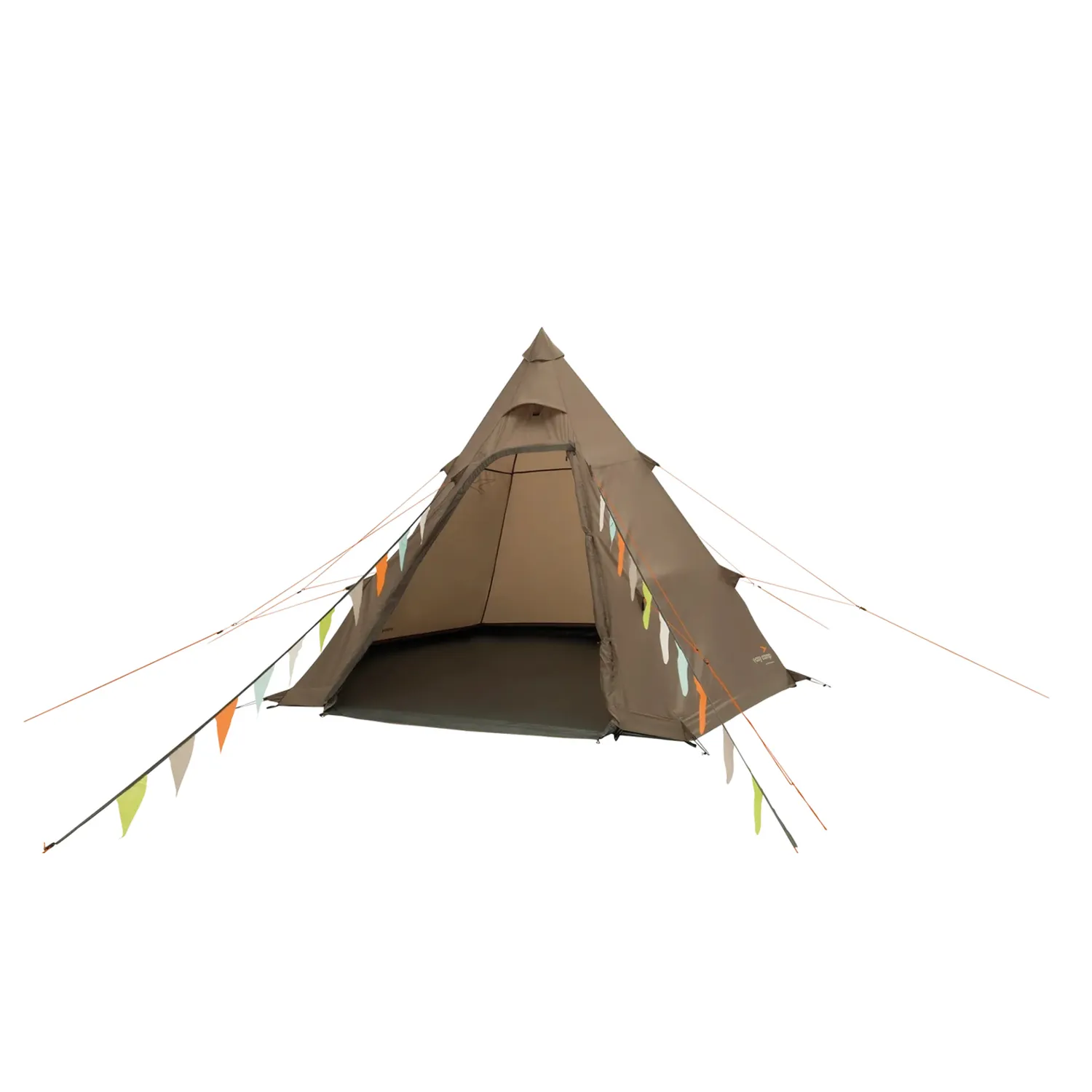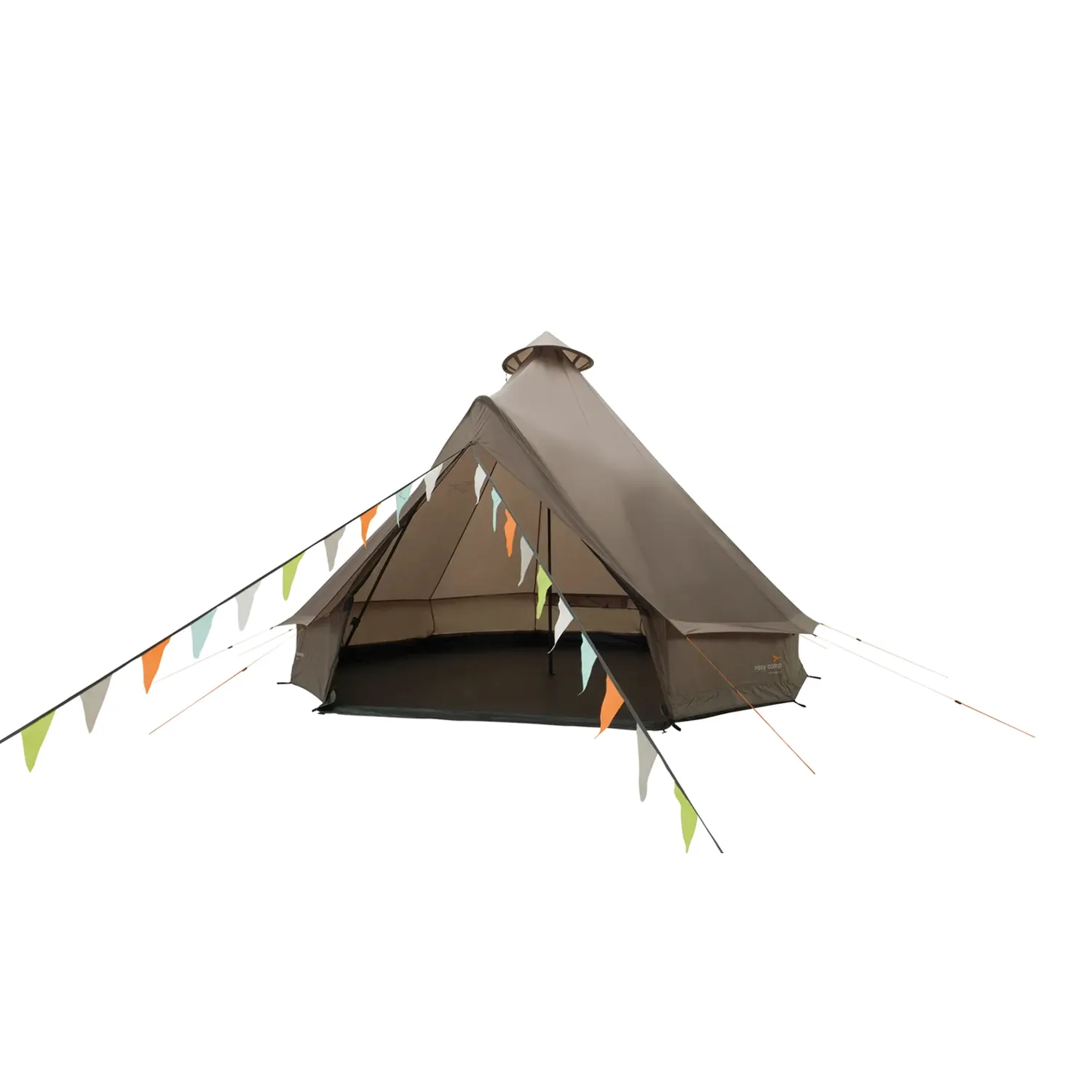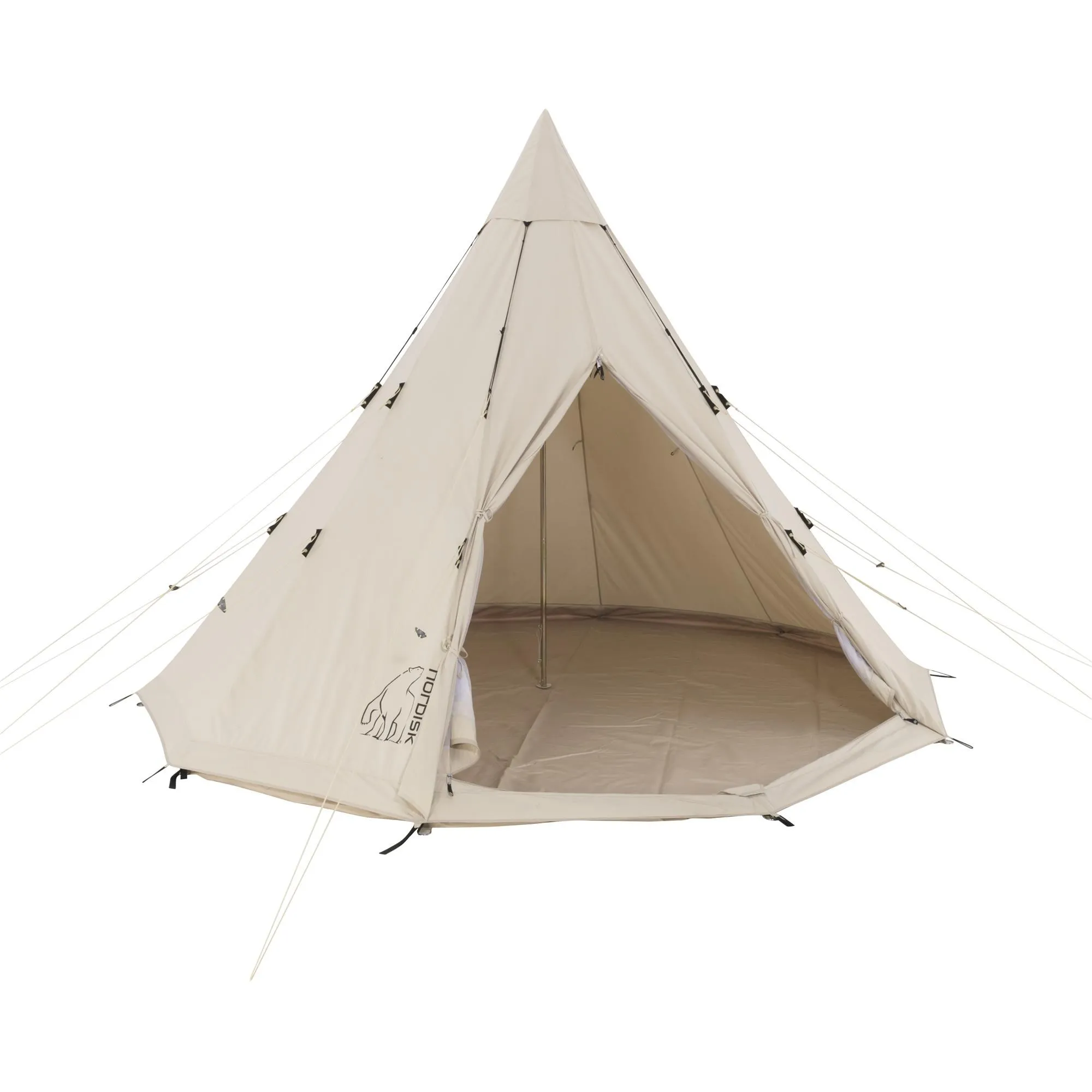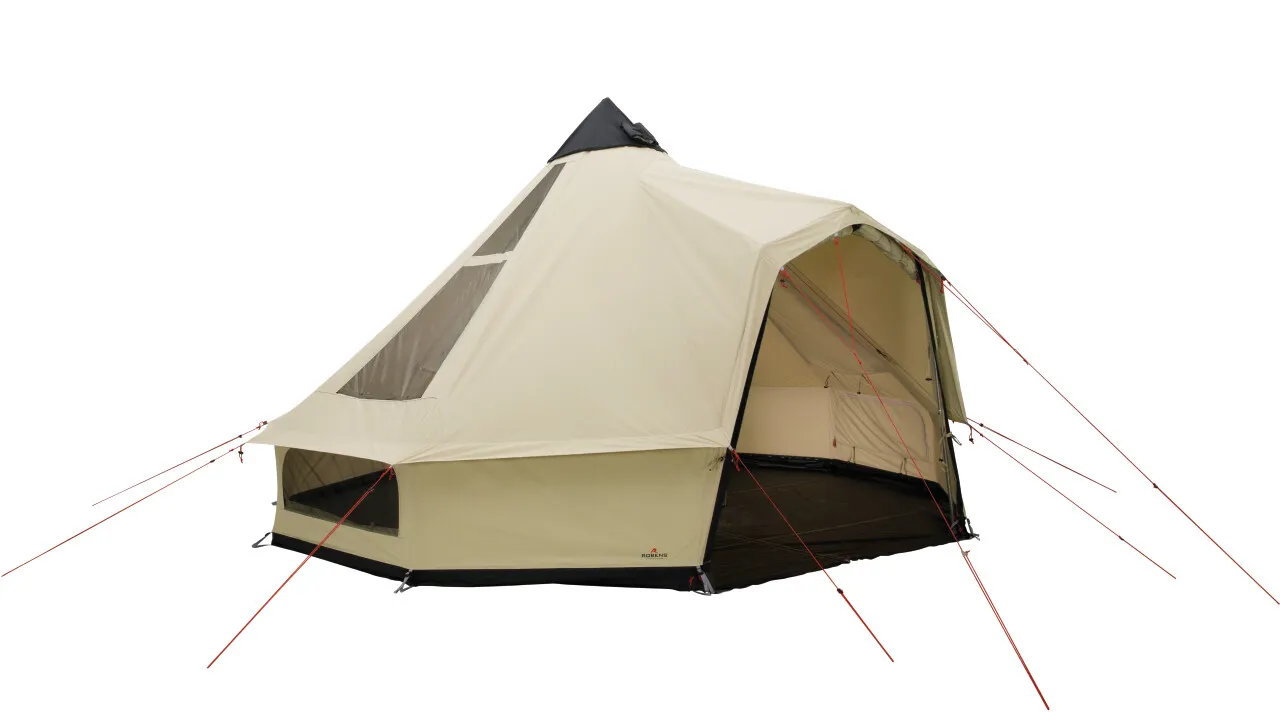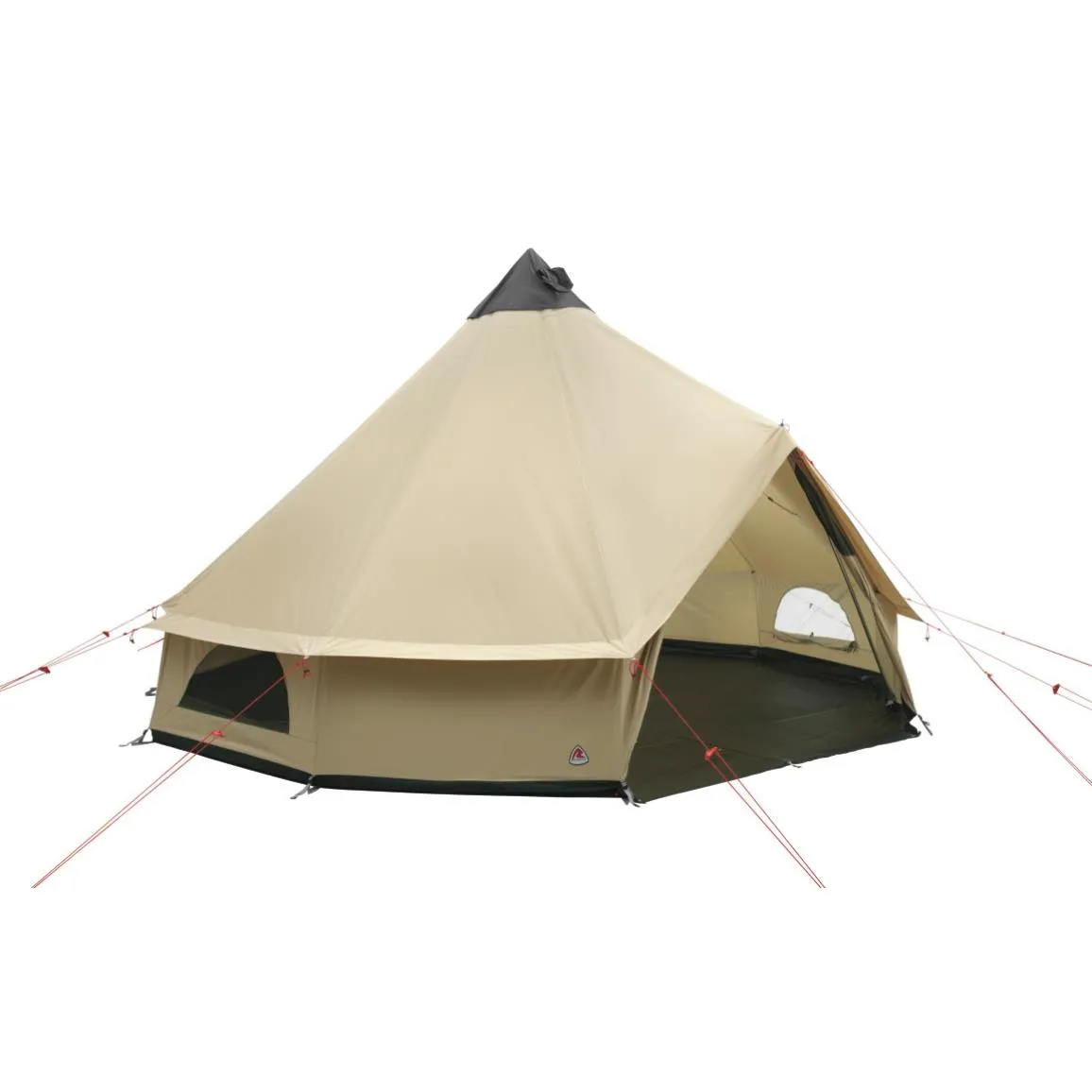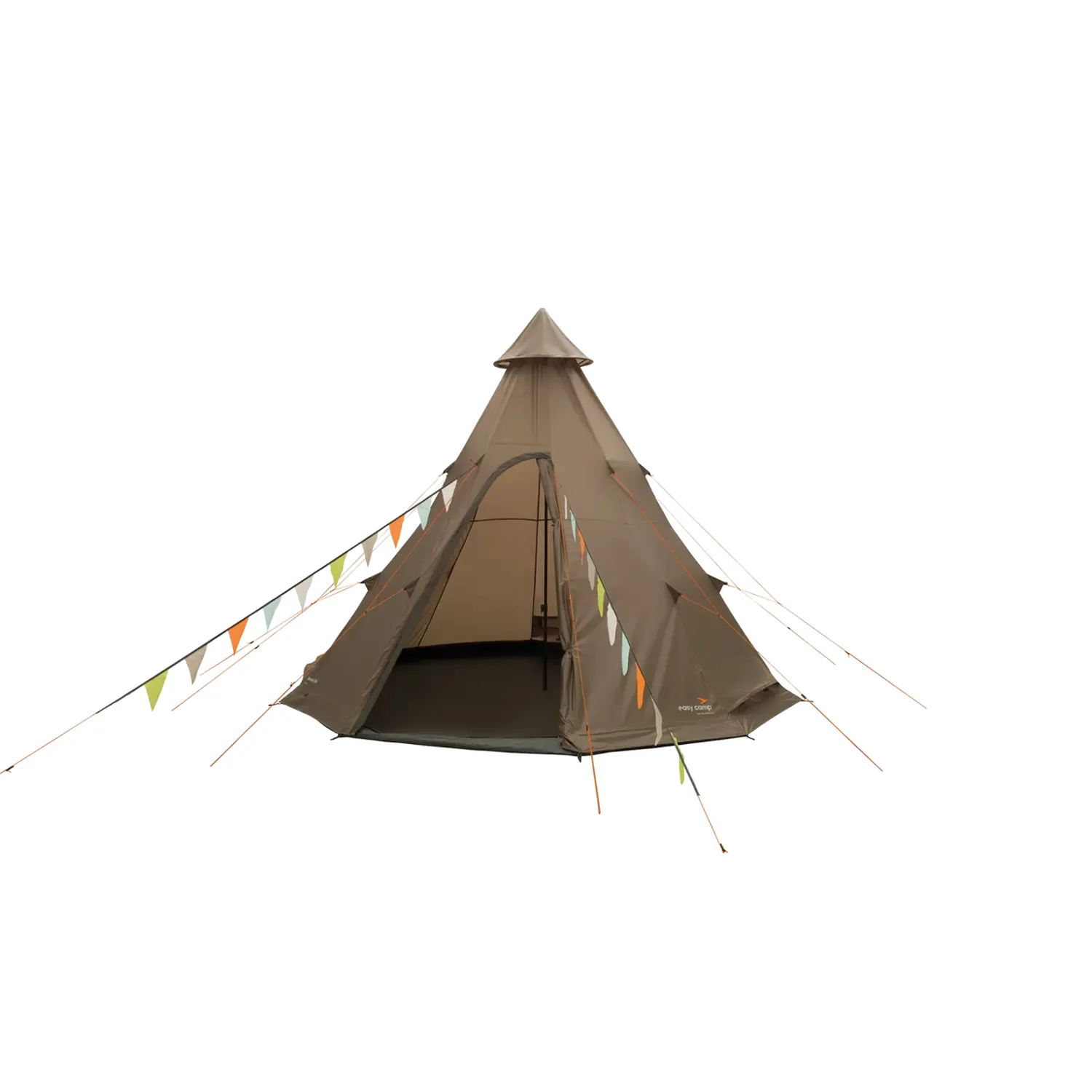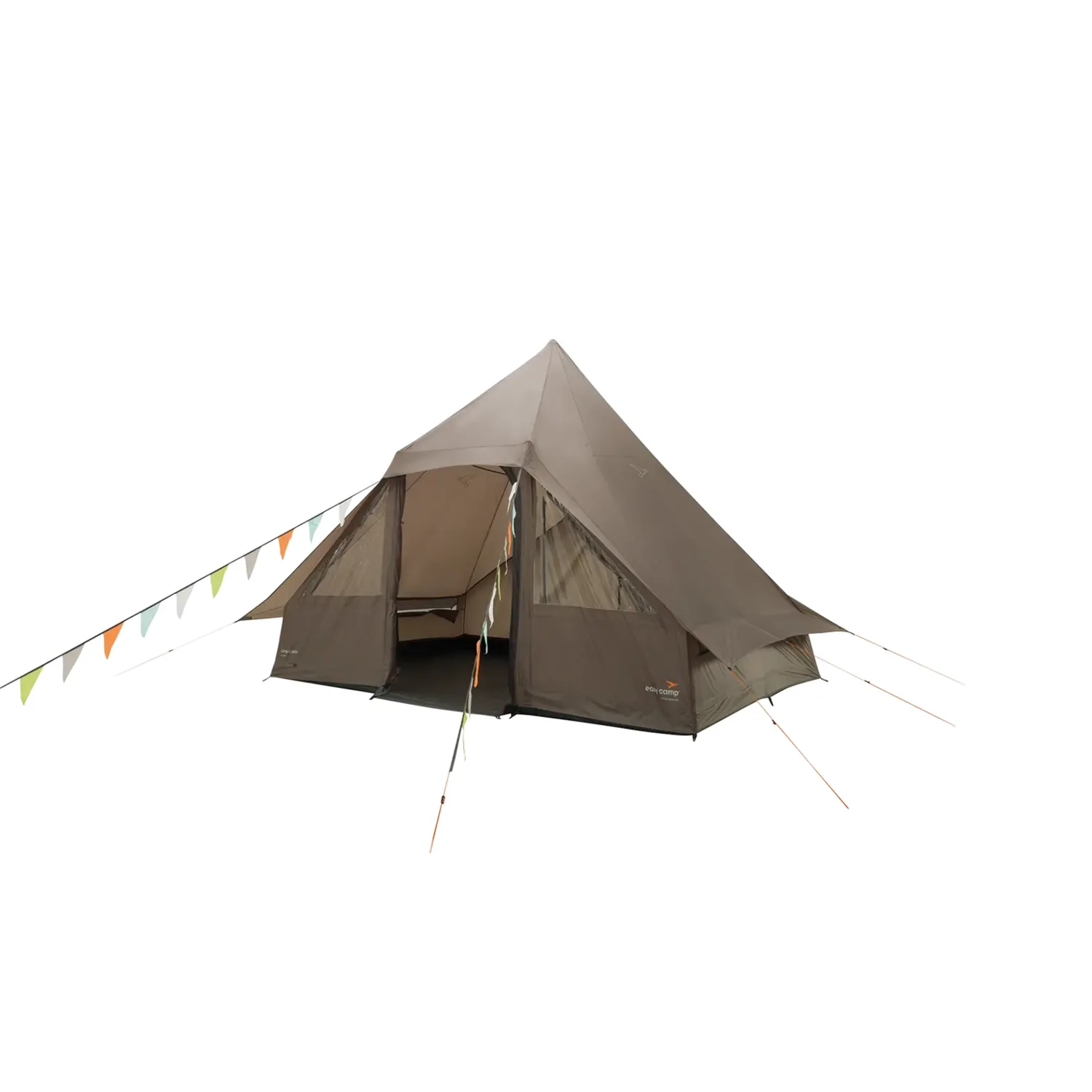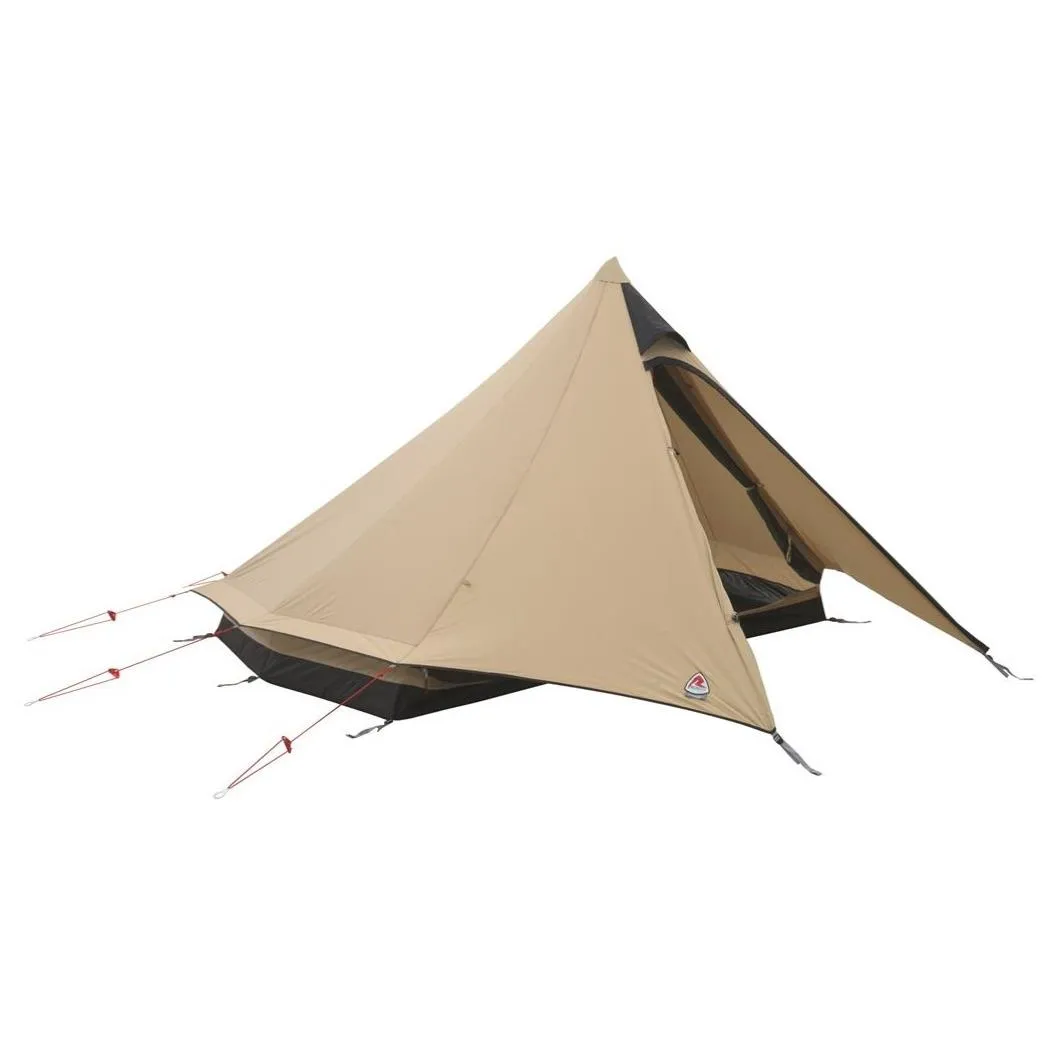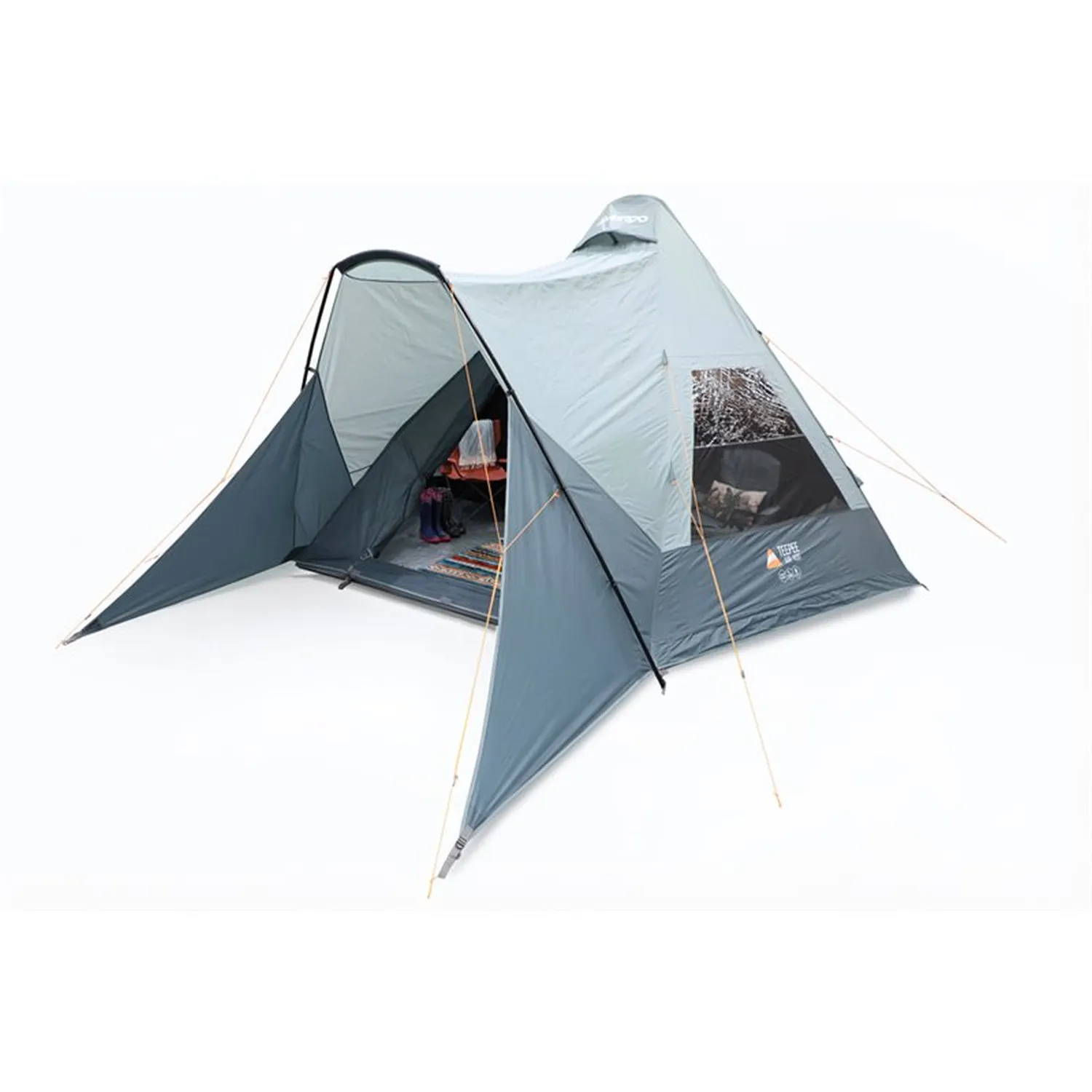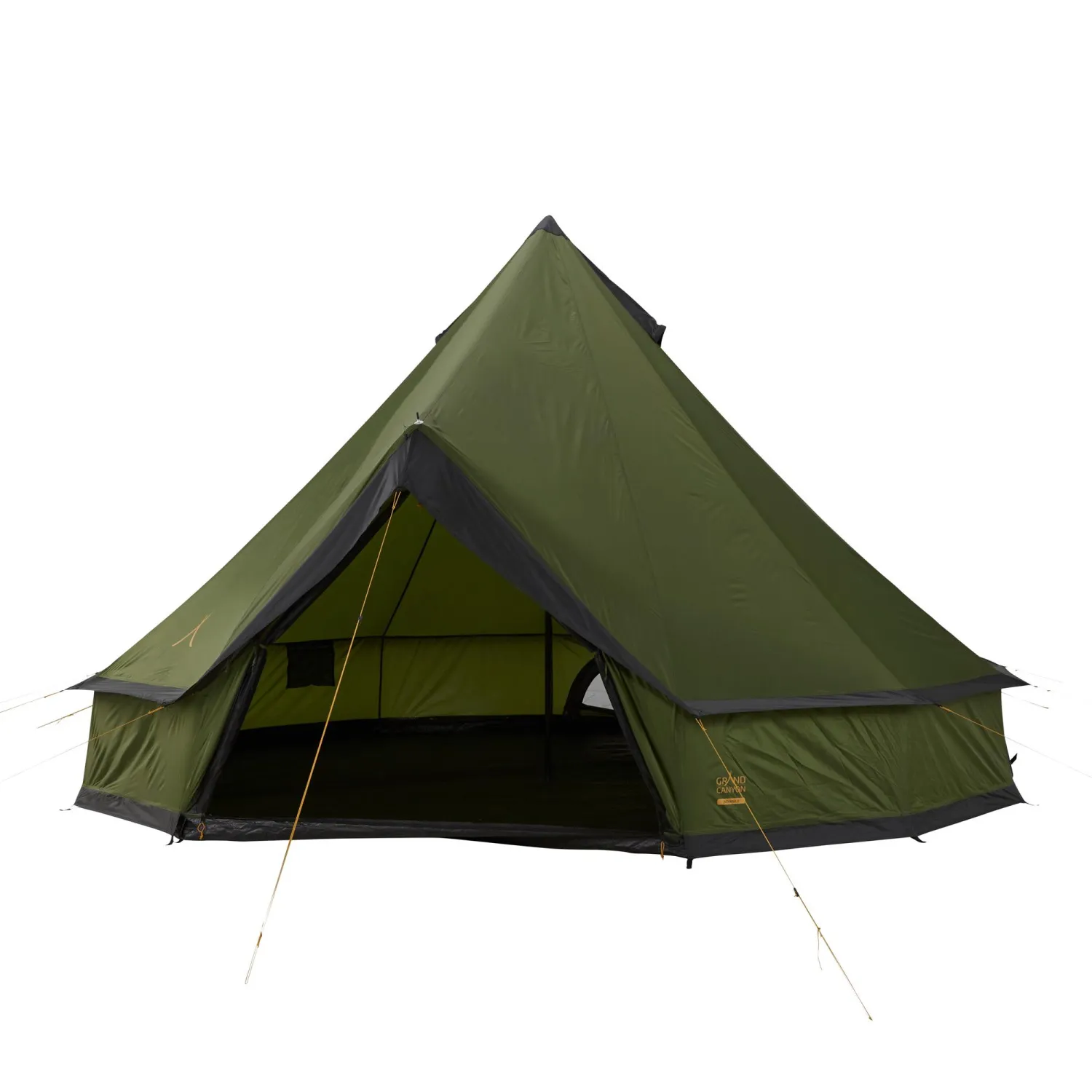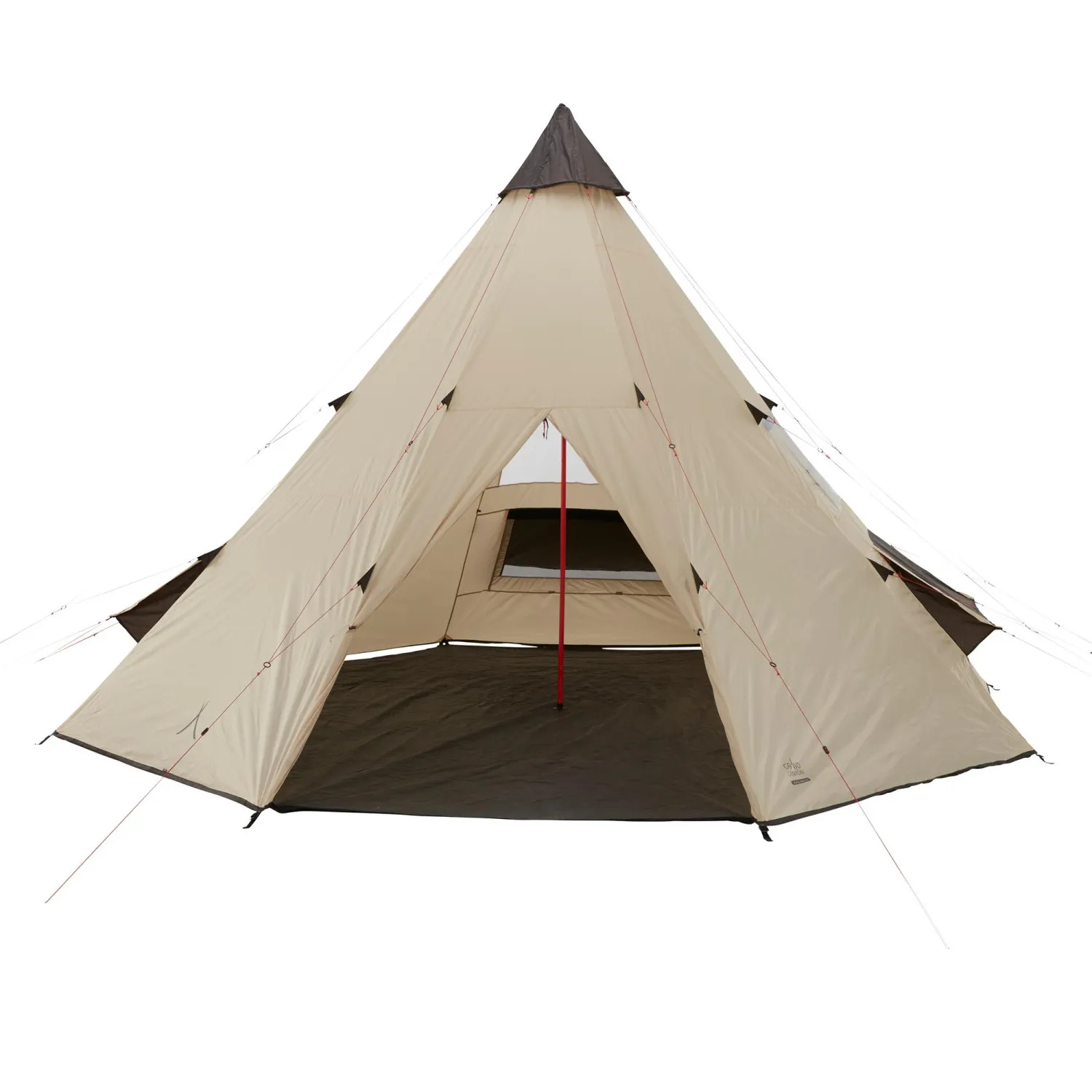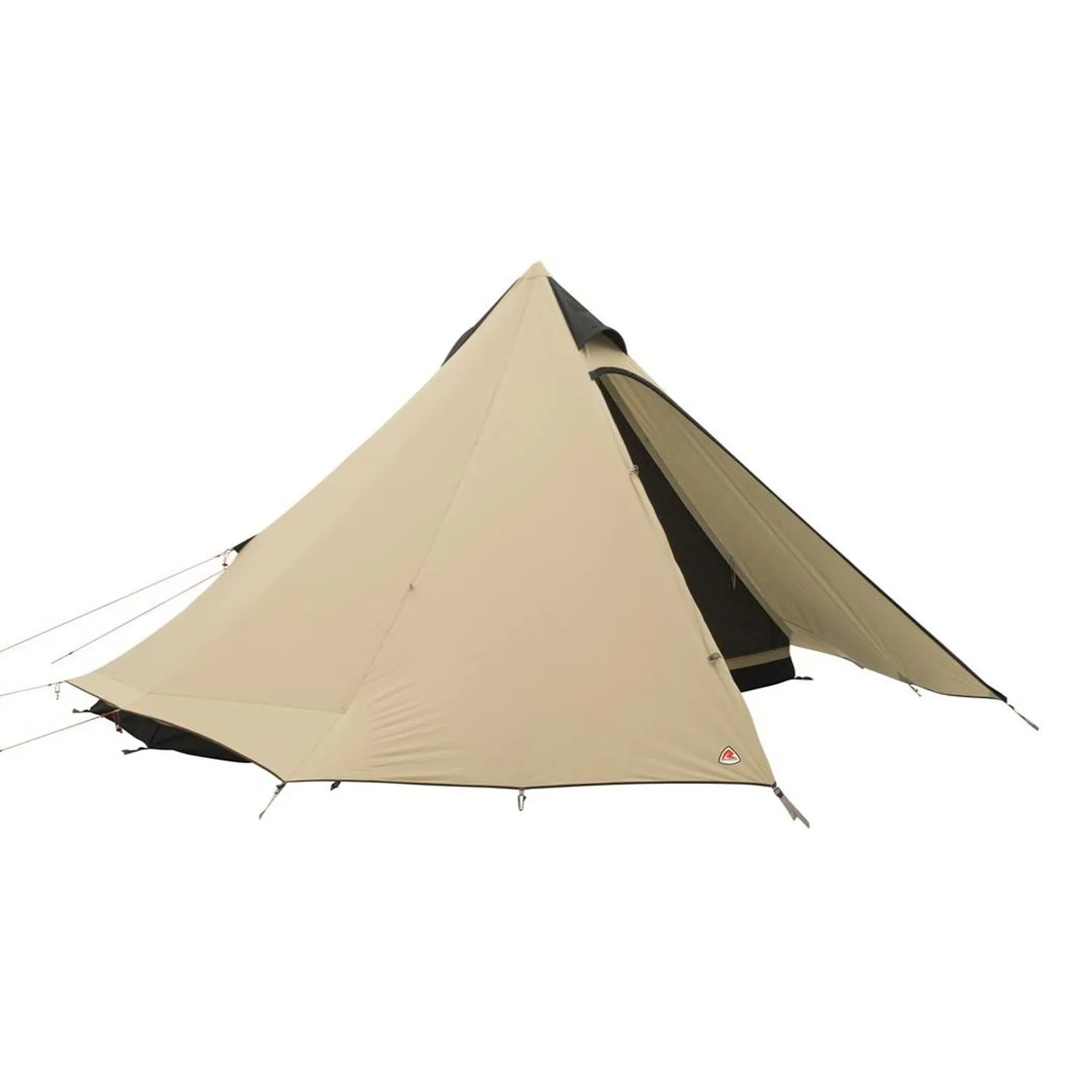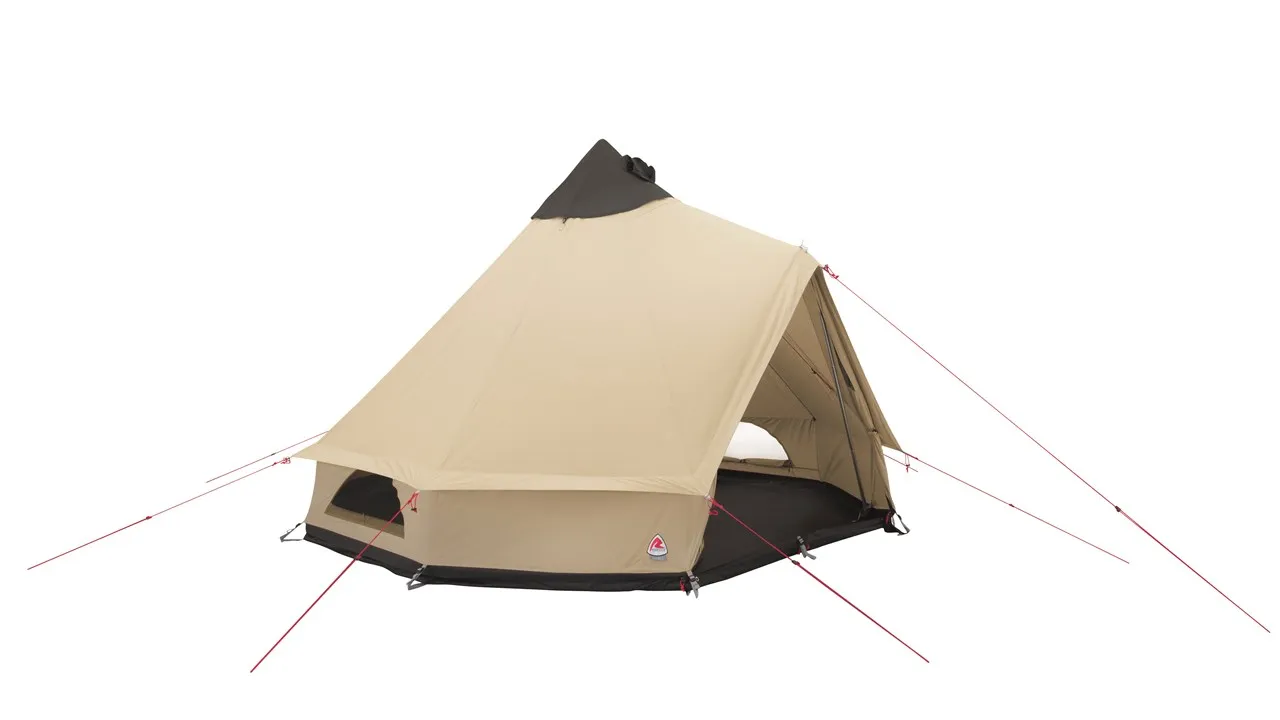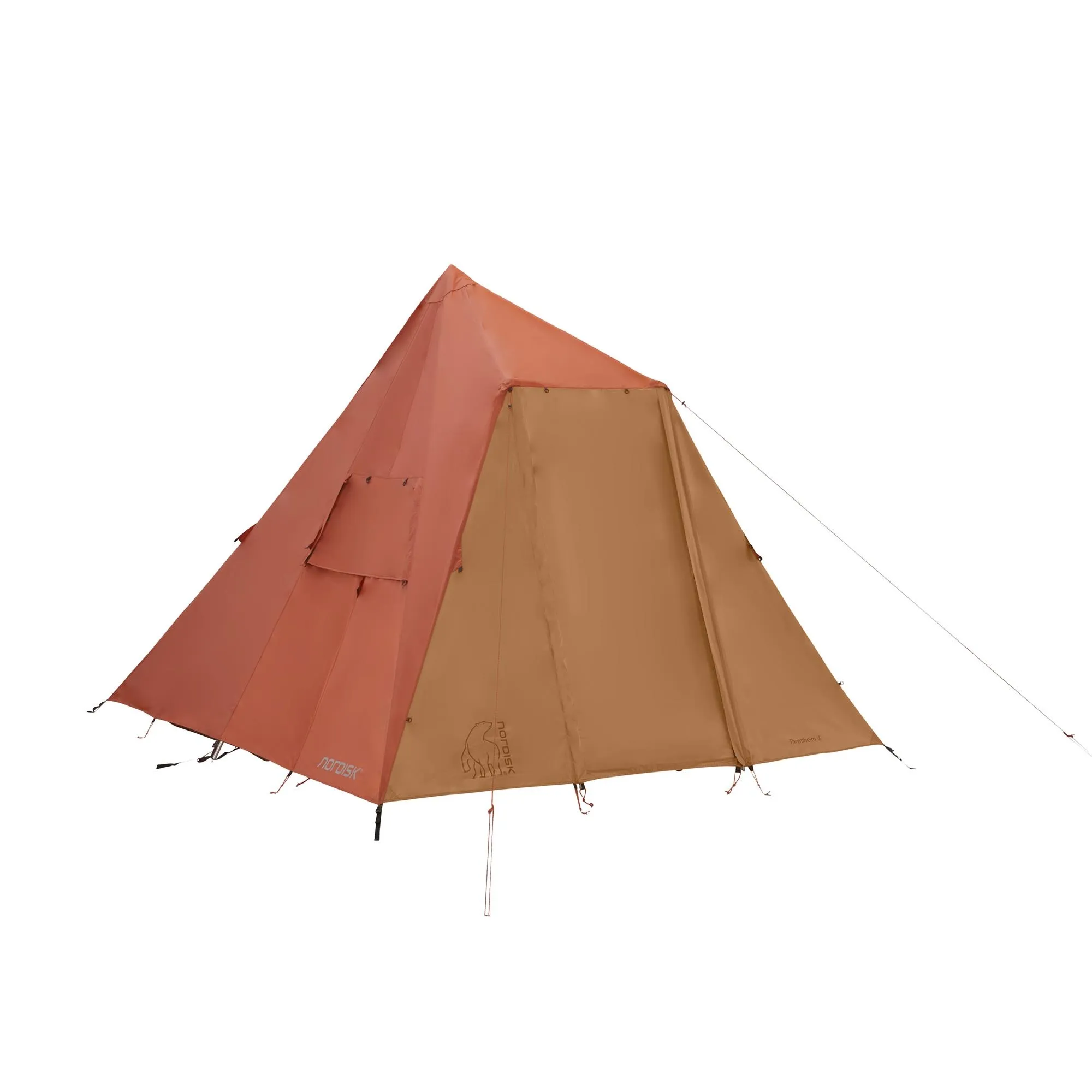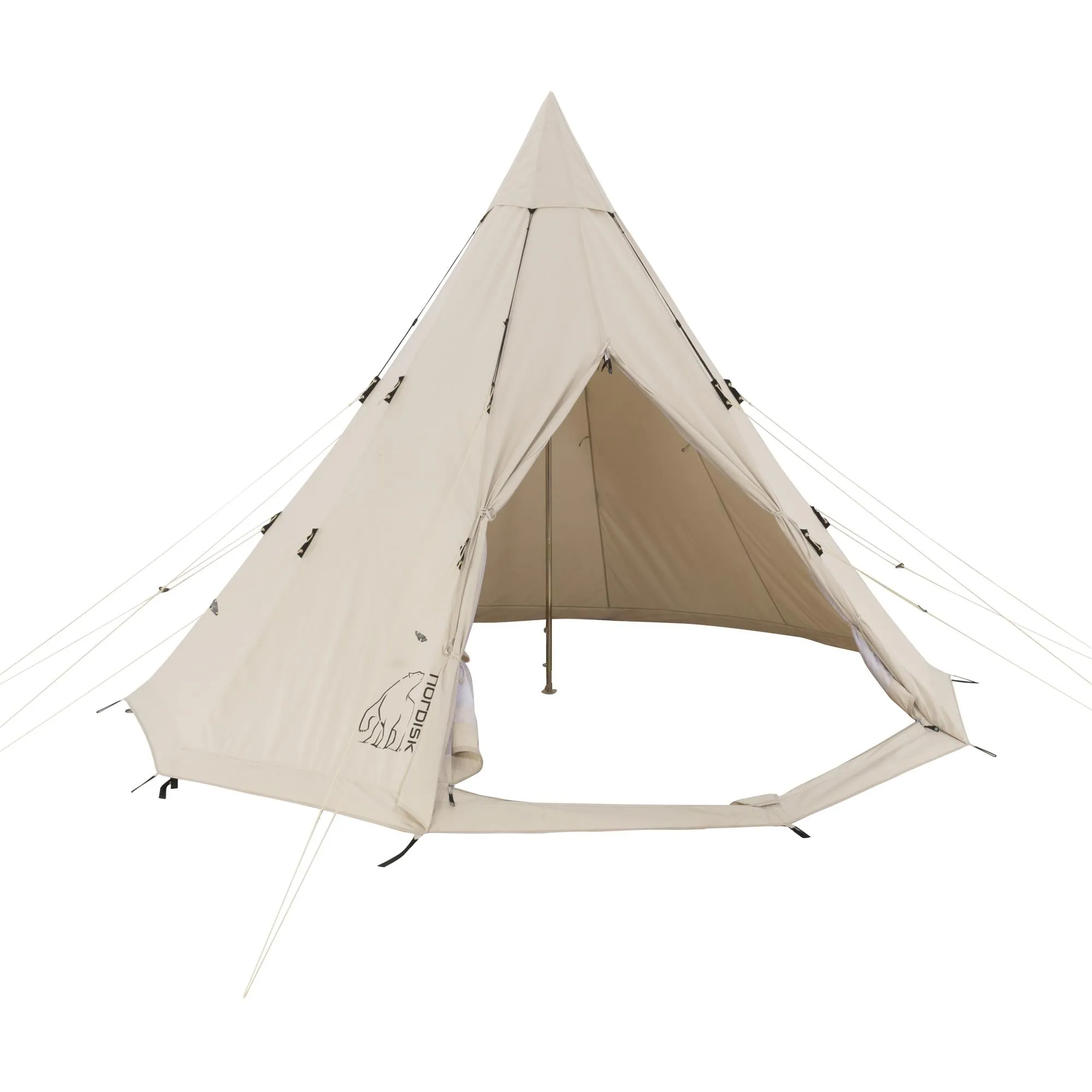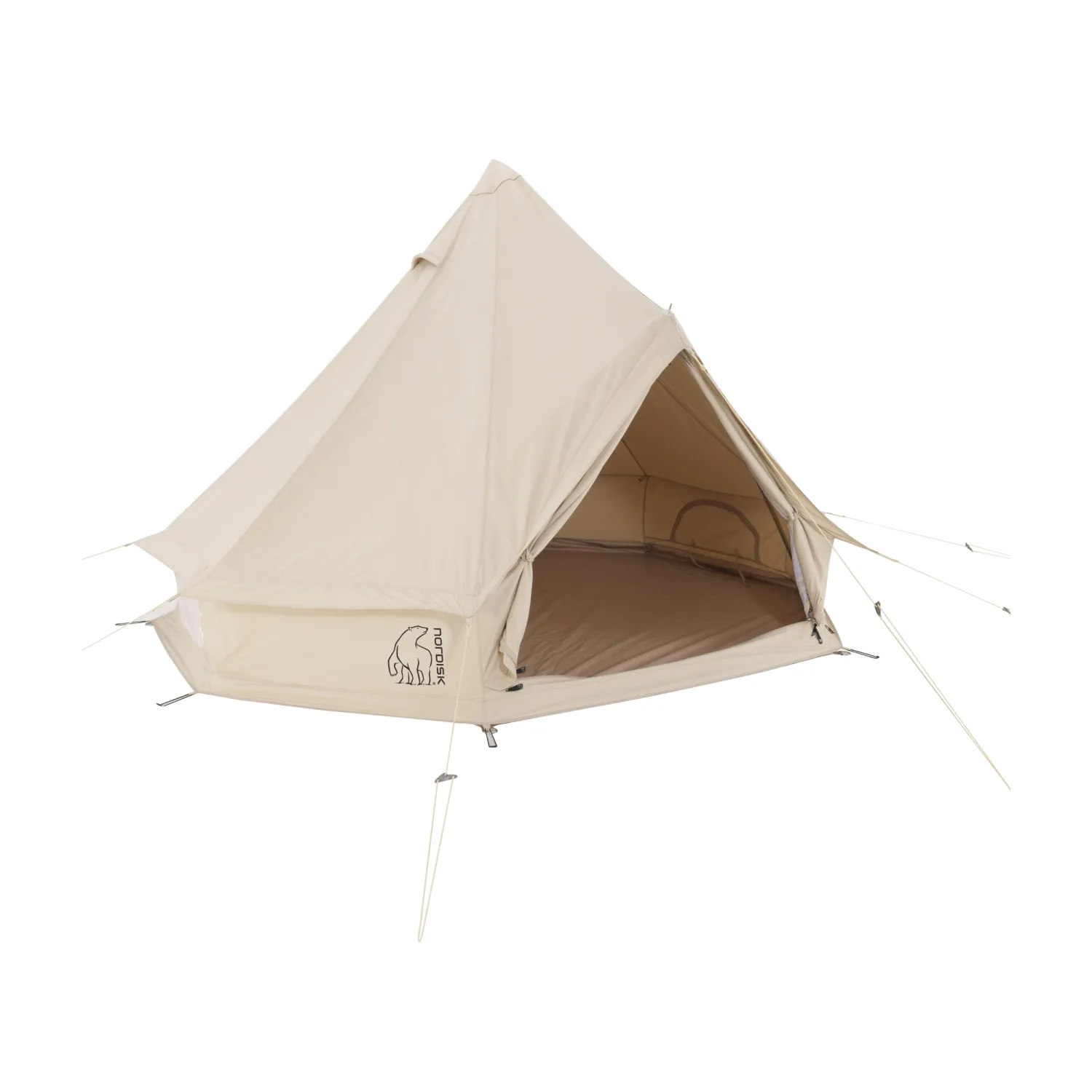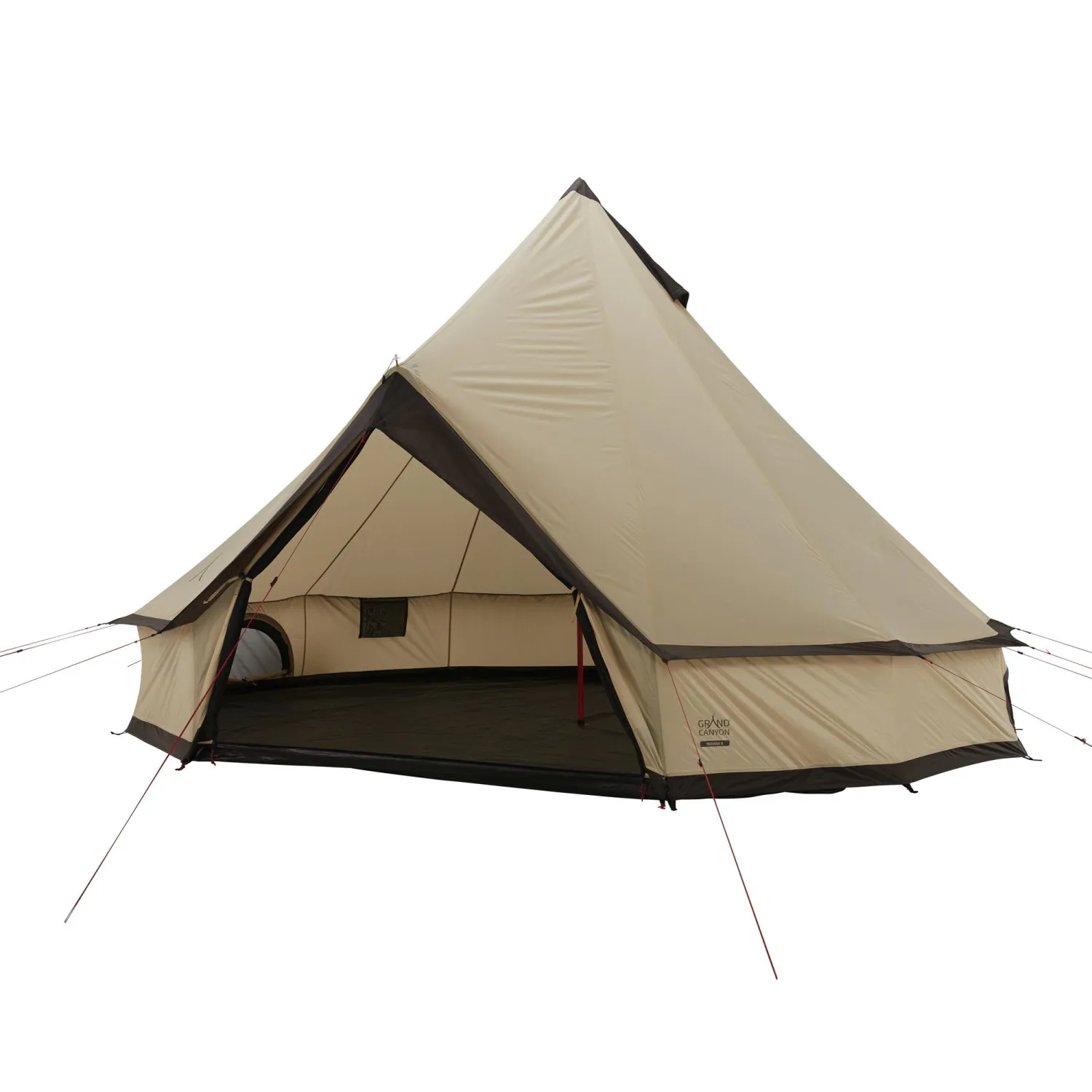Tipi tents
Inspired by traditional nomad tents, our tipi tents offer a unique retreat in the great outdoors. With spacious accommodation and a simple but efficient set-up, they are ideal for camping adventures with friends and family.
Read more
Filters
–
from
5.5 kg
until
26.7 kg
18 Article
Tipi tents
Adventure camping with outdoor tipi tents
Only tipi tents really bring the feeling of adventure and camping to life. The pyramid-shaped tent also looks unusual (and good) and offers plenty of space.
In autumn or winter, depending on the tent, you can even cook here or light a small stove!
Advantages and disadvantages of outdoor tipi tents
- Adventure and camp feeling
- Plenty of space for luggage, cooking, etc.
- Cosy place to stay on rainy days
- Suitable for families and large groups
- Tent height makes it possible to stand in the tent
- Pyramid shape allows rainwater to run off the outer walls without collecting or getting inside the tent
- High stability in windy conditions thanks to upright poles
- Very robust and durable thanks to special material
- Insects cannot crawl into the tent thanks to the interlinked groundsheet
- Suitable for cold seasons: Can be heated
- Depending on the type of tent, you can cook inside
- Essential accessories (groundsheet) usually have to be purchased separately
- Not for frequent changes of location
Checklist for an excellent pyramid tent
Flirting with the idea of buying a tipi tent, but not sure what to look out for? Use our checklist and find the perfect tent for you:
-
What material is the tipi made of?
Check the material to see whether it can withstand storms and thunderstorms and remain dry and waterproof even in heavy rain. Tent material made of cotton promises a pleasant climate - especially when it gets very warm and also protects against UV rays. Although pure polyester fabric makes the tent particularly light, it can make the tent feel stuffy if there are no windows. Cotton blended fabrics, on the other hand, also offer a pleasant climate and at the same time the necessary durability needed for harsher weather conditions. Bear in mind that you need less strength to pitch tents made of blended fabrics and polyester -
How big and heavy is the tent?
When choosing your tipi tent, consider the maximum number of people that can fit in the tent. Our pyramid tents can accommodate up to 12 people. This makes the tent particularly suitable for families, clubs, groups or camps. Our largest tent offers approx. 25 m² of living space. Pyramid tents made of mixed fabrics or polyester have the advantage of being ultra-light. A lighter tent is more comfortable, especially if you like to change locations frequently. Because it weighs less, it is much easier and quicker to set up. Travelling by bike? Here too, low weight and a small pack size are crucial. Our tipi tents weigh between 5 kg and 38 kg and the smallest pack size is 63 x 27 cm -
Which shape is suitable for my purposes?
Most tipi tents are equipped with a central centre pole. This creates the typical conical tipi or pyramid shape. The more corners are added, the more the shape varies. Which shape is suitable for your project depends on how you want to organise your tent - cooking area and sleeping cabins, sleeping cabins only or open living space? -
How waterproof is the tent?
Generally speaking, the tipi tent is more protected from the rain than its relatives due to its shape. How waterproof a tent is and how much rain it can withstand is indicated more precisely by the water column. Depending on the season and region, you should pay particular attention to this figure. A tent floor with a water column value of 1,500 mm or more is waterproof. If you are expecting particularly heavy rainfall, you should add tents with a water column of 3,000 mm or more to your wish list -
What does the inside of the tent look like?
Pay attention to how the tent is pitched. Not all pyramid tents have to be equipped with a centre pole. Does the pole in the centre bother you? In contrast to these models, A-shaped frames offer a pole-free living area. Not all tipi tents are equipped with a floor mat either. Before buying, check whether this is already included or whether you need to buy it separately. Also consider how much space the inner tent takes up. Is there still room for a tent stove or a cooking area as well as luggage? -
Do you need extra accessories?
Take a look at the accessories included in the purchase. Does it include all the essentials such as pegs, groundsheet and guy ropes? With many tipi tents, the groundsheet has to be purchased separately. However, this also offers design freedom. Space for a stove or separate tent cabins? You can organise the inside of the tent however you like -
Does the tent offer any specials?
Do you want to camp in autumn or winter? If you still want to be cosy and warm, look for tents whose floor can be opened up to the middle light metal pole with a zip. This allows you to use special tent stoves. Cooking inside is now also possible. Many tents are also equipped with ventilation windows or roof vents to support a pleasant indoor climate
Setting up an outdoor tipi tent
Pyramid tents are usually pitched in the same way. Depending on the tent, the set-up may vary depending on the shape, the presence or absence of a centre pole and the connection between the inner and outer tent and groundsheet.
Proceed as follows:
- First spread out a groundsheet to provide additional protection against water.
- Then spread out the inner tent and guide the tent poles through the tunnels provided.
- Secure the inner tent with pegs.
- Now erect the centre pole, if available.
- Erect the flysheet and secure it to the inner tent and to the ground with pegs.
- Make sure that the entrance is in the right place in relation to the inner tent and away from the wind direction.

























